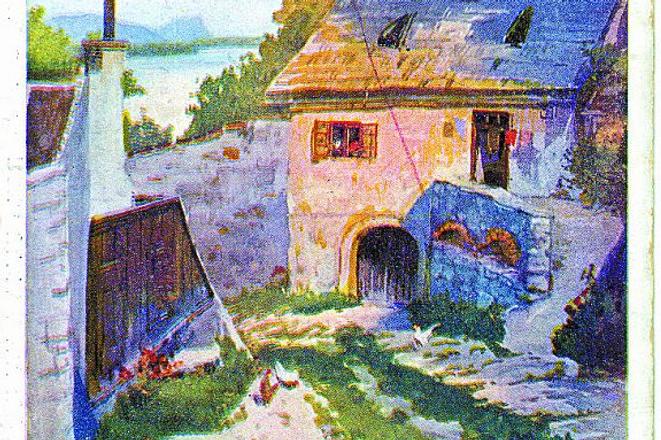THE ANCIENT quarters that used to lie under Bratislava Castle can now only be seen in photographs and postcards. The maze of streets covering the foot of castle hill extended from the SNP Bridge to the tram tunnel near the Chatam Sofer memorial. As many houses had been abandoned or poorly maintained, they were gradually demolished from the 1950s. The city of Bratislava thus lost a picturesque quarter, interesting from both an historical and architectural point of view.
Residents of the quarter usually worked on or around the Danube, among them many boatmen, fishermen and also millers. The latter’s occupation is still present in the name of Mlynárska Street (Miller’s Street) which is depicted in this postcard by painter Heinz Pingger, published by the Karol Angermayer publishing company probably during the First World War.
In medieval Pressburg many people owned mills along the Danube or on Danubian islands which no longer exist.
It is thought that despite being comparatively numerous, the mills could not fully meet the demand of the town’s inhabitants. As the Danube’s watershed was unregulated, high river levels and frequent floods made the millers’ work much harder and sometimes even endangered the town. As a consequence of the Danube’s caprices, a few horse-driven mills also operated in Pressburg during this era. Millers were usually wealthy men, often owning several houses and vineyards.
Records from 1379, for example, tell us that Weinschenker, Flemmck, Müllner and Schramat were among the most important and wealthiest millers. As can be seen from their names, medieval Pressburg was certainly a German-speaking town.


